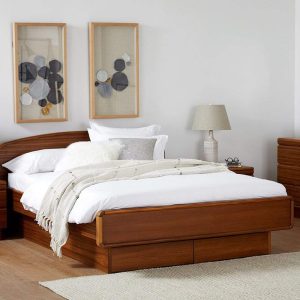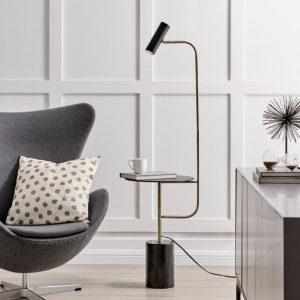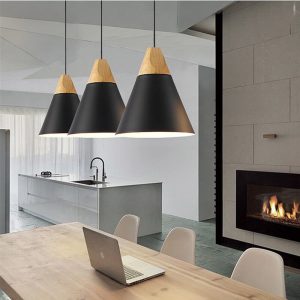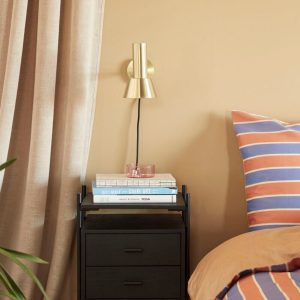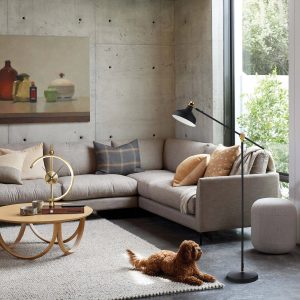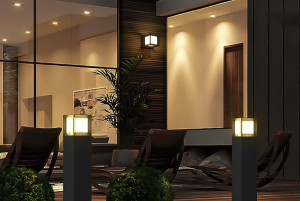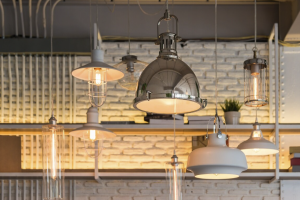
Lighting plays a crucial role in the overall ambiance and functionality of a child’s room. It is not merely a practical necessity; it significantly influences a child’s mood, behavior, and even their ability to focus on tasks such as reading or homework. Proper lighting can create a nurturing environment that fosters creativity and comfort, allowing children to thrive in their personal spaces.
For instance, a well-lit room can help reduce eye strain during reading or studying, while dimmer lights can create a calming atmosphere conducive to relaxation and sleep. Moreover, the right lighting can also enhance the aesthetic appeal of a child’s room. Children often have vibrant personalities and unique interests, and lighting can be a powerful tool in reflecting these traits.
By selecting appropriate fixtures and bulbs, parents can create a space that feels personalized and inviting. This is particularly important as children grow and their tastes evolve; adaptable lighting solutions can accommodate changing preferences while maintaining a sense of continuity in the room’s design.
Choosing the Right Lamp for Your Child’s Room
When selecting a lamp for a child’s room, several factors come into play, including the lamp’s size, style, and functionality. The lamp should be proportionate to the room’s dimensions and the furniture within it. For example, a large floor lamp may overwhelm a small space, while a tiny bedside lamp might be insufficient for illuminating a larger area.
Additionally, the lamp’s design should complement the overall decor of the room, whether it features whimsical themes or more sophisticated elements. Functionality is another critical aspect to consider. A lamp should not only provide adequate light but also serve specific purposes.
For instance, a desk lamp with adjustable brightness levels can be invaluable for homework sessions, while a nightlight can help ease nighttime fears. Parents should also consider the lamp’s ease of use; children should be able to operate it independently as they grow older. This encourages responsibility and fosters a sense of ownership over their space.
Safety Considerations for Kids’ Room Lamps
Safety is paramount when it comes to choosing lamps for children’s rooms. Young children are naturally curious and may inadvertently put themselves at risk if safety measures are not taken into account. One of the first considerations should be the lamp’s construction; opting for sturdy materials that can withstand rough handling is essential.
Lamps with heavy bases are less likely to tip over, reducing the risk of accidents. Additionally, parents should look for lamps that have been tested for safety standards. Certifications from organizations such as Underwriters Laboratories (UL) indicate that the product has undergone rigorous testing for electrical safety.
It is also wise to choose lamps with cool-to-the-touch bulbs or LED options that minimize heat output, preventing burns or fire hazards. Furthermore, ensuring that cords are safely tucked away or secured can help prevent tripping hazards and keep curious little hands from tugging on them.
Creating a Cozy Atmosphere with Warm Lighting
Warm lighting is often associated with comfort and relaxation, making it an ideal choice for children’s rooms. Unlike harsh, bright white lights that can feel sterile and uninviting, warm lighting creates an inviting atmosphere that encourages relaxation and restful sleep. This type of lighting can be achieved through various means, including the use of soft white bulbs or lampshades that diffuse light gently throughout the space.
Incorporating warm lighting into a child’s room can also enhance their bedtime routine. For example, using dimmable lamps allows parents to gradually lower the light levels as bedtime approaches, signaling to children that it is time to wind down. This gradual transition can help ease anxiety about going to bed and create a more peaceful environment conducive to sleep.
Additionally, warm lighting can highlight decorative elements in the room, such as artwork or themed decor, adding to the overall cozy feel.
Incorporating Fun and Playful Designs in Kids’ Room Lamps
Children’s rooms are often vibrant spaces filled with imagination and creativity, and lamps can play a significant role in enhancing this playful atmosphere. Choosing lamps with fun designs—such as those shaped like animals, stars, or favorite characters—can add an element of whimsy to the room. These playful designs not only serve as functional lighting but also act as decorative pieces that reflect the child’s personality and interests.
Moreover, incorporating interactive elements into lamp designs can further engage children. For instance, lamps that change colors or feature adjustable brightness settings can captivate young minds and encourage them to take an active role in their environment. Such features not only make the lamp more appealing but also provide opportunities for children to express their creativity by customizing their lighting experience according to their mood or activity.
DIY Ideas for Personalizing Your Child’s Lamp
Customizing with Fabric Paint or Markers
One simple DIY idea is to customize a plain lampshade using fabric paint or markers. Children can draw their favorite characters or patterns on the shade, transforming an ordinary lamp into a one-of-a-kind piece that reflects their personality.
Decorating with Stickers or Decals
Another creative approach involves using stickers or decals to decorate the lamp base or shade. This method allows for easy changes as children’s interests evolve over time; simply peel off old stickers and replace them with new ones that align with their current passions.
Encouraging Artistic Expression and Ownership
Additionally, parents can involve children in selecting colors and designs that resonate with them, fostering a sense of ownership over their space while encouraging artistic expression. This collaborative process not only creates a personalized lamp but also strengthens the bond between parents and children.
Benefits of Personalization
By personalizing a child’s lamp, parents can help their child develop a sense of individuality and self-expression, making their space truly special and meaningful to them.
Tips for Teaching Kids about Energy Efficiency and Conservation with Lamps
Teaching children about energy efficiency is an essential life skill that promotes environmental awareness from an early age. Parents can start by explaining the importance of using energy-efficient bulbs, such as LED lights, which consume significantly less energy than traditional incandescent bulbs while providing the same level of brightness. Demonstrating how these bulbs last longer and save money on electricity bills can help children understand the practical benefits of energy conservation.
Involving children in simple practices can further reinforce these lessons. For instance, parents can encourage kids to turn off lights when leaving a room or use natural light during the day whenever possible. Creating a fun chart to track energy-saving habits can motivate children to participate actively in conservation efforts.
By making these practices engaging and rewarding, parents instill lifelong habits that contribute positively to both their household budget and the environment.
Budget-Friendly Options for Cozy Lighting in Kids’ Rooms
Creating a cozy atmosphere in a child’s room does not have to break the bank; there are numerous budget-friendly options available for achieving warm lighting effects. One effective approach is to utilize string lights or fairy lights, which can be draped around furniture or hung on walls to create a magical ambiance without requiring significant investment. These lights come in various styles and colors, allowing for customization based on the child’s preferences.
Another cost-effective solution involves repurposing existing lamps by updating their shades or bases with paint or fabric covers. This DIY approach not only saves money but also allows parents to tailor the lamp’s appearance to fit their child’s evolving tastes. Thrift stores and garage sales often have hidden gems that can be transformed into unique lighting fixtures with minimal effort and expense.
By exploring these budget-friendly options, parents can create inviting spaces that foster comfort and creativity without compromising on style or safety.

